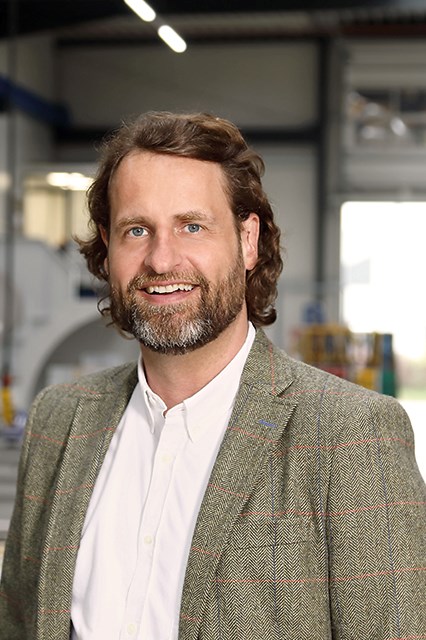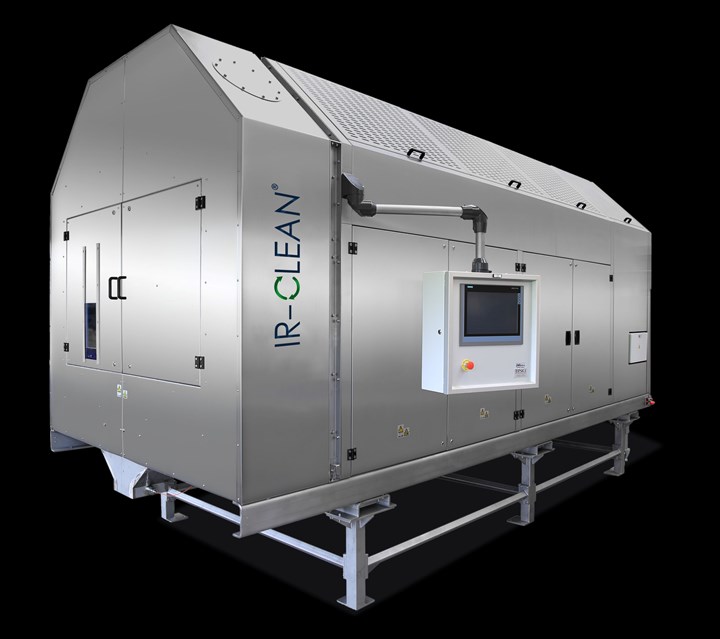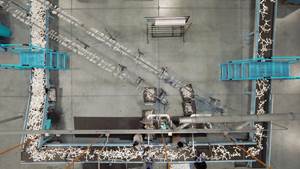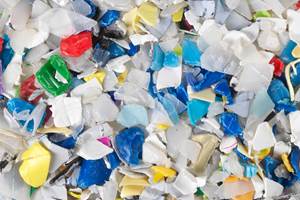Kreyenborg’s Take on the Current Status of Plastics Recycling
As part of a series of industry interviews leading-up to K-2022, VDMA interviews Jan Hendrik Ostgathe, Kreyenborg managing director.

Kreyenborg’s managing director Hendrik Ostgathe.
Photo Credit: VDMA and Kreyenborg
Earlier this year, I reported on bulk material handling equipment manufacturer Kreyenborg (represented in the U.S. by eFactor3, Llc, Charlotte, N.C.), and its advancement of new odor minimization technology for high-quality recycled plastics. The company has developed sustained, high-level expertise in plastics recycling, with solutions for decontamination of PCR-PET, crystallization, drying, and heating of bulk materials, using infrared technology. Furthering this technology is the new IR-Fresh modular system for the safe and efficient reduction of interfering odors in plastics, according to the company.
I also blogged about a recent interview, conducted by VDMA, Germany’s plastics and rubber machinery association where a team, including VDMA consultant Ina Vettkoetter, interviewed Patrick Henzler, sales director at WEIMA Machinenbau, as part of a series of industry interviews in the lead-up to K 2022 trade fair.
Adding to the series, VDMA’s Ina Vettkoetter recently interviewed Jan Hendrik Ostgathe, Kreyenborg’s managing director. Here is his assessment of the current status of the plastics recycling and the circular economy.

VDMA: How has the circular economy developed in recent years?
Ostgathe: A great deal of things have been set in motion. As a family business, we have been associated with the plastics industry for decades. Until a few years ago, recycling only played a minor role for many companies, but that has now changed. Market players who used to pay less attention to recycling are jumping on the bandwagon.
We are also seeing major extruder manufacturers who were previously less associated with recycling now starting to offer recycling equipment, indicating a clear a trend towards recycling. At Kreyenborg, we register increased demand for our machines from the recycling industry. At the latest since the K 2019, which can be seen as the starting signal for the recycling economy, this demand has seen a linear increase.
VDMA: Who are the drivers?
Ostgathe: We all drive each other in the circular economy. In recent years, consumers have developed a completely different awareness in the face of climate change and the identified finite nature of resources. Major brand owners are responding to this, and many now want to go green themselves and take on a pioneering role. Machine manufacturers are also drivers, because they provide the machines that make recycling possible in the first place.
The market is also a driver. If raw plastics become expensive to produce, this can provide an economic advantage for recycled materials. And, of course, legislative bodies are also providing an impetus by stipulating that a certain value stream must be recycled. It’s all interlinked. A dynamic has now been created within which all participants are inspiring and encouraging one another. I think this is the right way to go.
VDMA: What significance does information have in this process?
It is enormously important. Everyone must know what is right and what needs to be done. And this is where things are often still lacking. For example, an organic label advertises with outer packaging made of recycled paper. But on the inside, this paper is coated with plastic. Consumers who are not aware that this packaging is virtually impossible to recycle, or can only be recycled at great expense, will have the feeling that they’ve done something positive for the environment. But the opposite is the case.
VDMA: At the beginning of the circular economy, recyclates were of poor quality, but initially it was all about getting started. Now the focus is on quality. What contribution is Kreyenborg making in this regard?
Ostgathe: To improve the quality of recyclates, we have developed two new methods for our reprocessing machines. The first one, IR-Clean, is an additional cleaning process that removes contaminants from PET. In the end, one hundred percent of the PET recyclates treated in this way can be used again for food packaging. Demand for this product has risen sharply in recent years. The second method, IR-Fresh, which is still very new, involves removing unpleasant odors from HDPE packaging, such as shampoo bottles. In both processes, we work very efficiently with infrared light as an energy source. Both are very good solutions for eliminating odors and contamination once the value streams have reached a stage where they can also be sorted.
VDMA: Where do you still see barriers for the circular economy?
Ostgathe: The availability of material streams is still insufficient, which is putting the brakes on the process just as much as the fact that the purity of material type is still largely lacking. This is difficult to achieve because there are a large number of different recyclates, plastic combinations in a product or contamination through printing inks. So-called multi-layer packaging is difficult to recycle because it combines different plastics with different properties. We should think about establishing separate deposit systems for different plastics, comparable to the one for PET bottles. As long as this does not exist and no sorting purity is achieved, recycling will be difficult.
VDMA: Germany is more advanced in the circular economy than other countries. How can it be set up elsewhere?
Ostgathe: We are already discussing technical solutions here on how we can represent value streams; no one else is that far advanced. In South America, for example, there is no deposit system for PET bottles. Here, people collect PET bottles in the streets and sell the material to the processors. There's almost more recycling here than in many other industrialized countries. And that's only because they make money from it. That's the key to the whole thing. You have to be able to make money with recycling.
Virgin material is still too cheap in many parts of the world. Manufacturers and consumers are too careless with plastic because, in some cases, it just doesn't hurt cost-wise. We don't need a lot of regulation, what we need are tangible incentives for manufacturers and consumers to use single-variety and therefore recycling-friendly packaging solutions. In addition, however, there must be even more incentives to ensure that these packaging solutions can be realized with recycled plastics. There must be monetary control. Ultimately, it must become more expensive for all of us to simply throw away the recyclable material plastic. Resources are finite.
Related Content
Building a Future With Sustainable Compounds
With roots in recycling, Star Plastics produces engineering thermoplastic compounds to meet performance and environmental goals.
Read MoreReversing Logistics for Plastic Film Recycling
Learn how Mainetti built a circular supply chain for clear film packaging.
Read MoreOptical Sorting for Color Flexibility in Recycled Plastics
Aaron Industries added optical sorting to its operation, expanding capabilities to meet the color needs of customers.
Read MoreLooking to Run PCR on a Single Screw? Here’s What to Keep in Mind
Just drop it in and mix it up? Sorry, there’s a lot more to it than that. Here is some of what you need to consider.
Read MoreRead Next
Beyond Prototypes: 8 Ways the Plastics Industry Is Using 3D Printing
Plastics processors are finding applications for 3D printing around the plant and across the supply chain. Here are 8 examples to look for at NPE2024.
Read MoreFor PLASTICS' CEO Seaholm, NPE to Shine Light on Sustainability Successes
With advocacy, communication and sustainability as three main pillars, Seaholm leads a trade association to NPE that ‘is more active today than we have ever been.’
Read MoreMaking the Circular Economy a Reality
Driven by brand owner demands and new worldwide legislation, the entire supply chain is working toward the shift to circularity, with some evidence the circular economy has already begun.
Read More






























